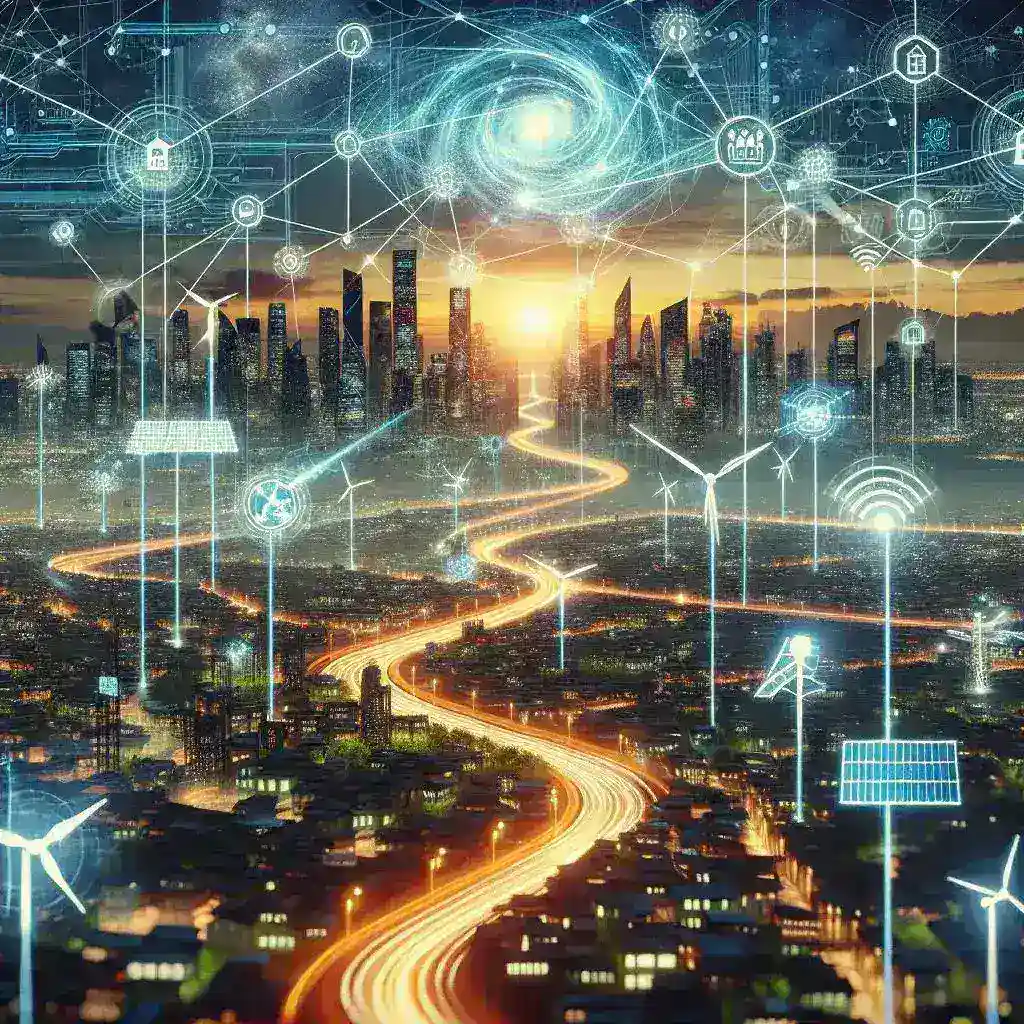Introduction to Smart Grids: The Evolution of Power Distribution
The traditional power grid system, which has served us for over a century, is undergoing a revolutionary transformation through the implementation of smart grid technology. This modernization of our energy infrastructure represents one of the most significant advances in electricity delivery since the inception of the power grid itself.
Understanding Smart Grid Technology
Smart grids integrate advanced digital communications, automated controls, and modern energy management technologies to create a more responsive, efficient, and resilient power distribution network. Unlike traditional grids, smart grids enable two-way communication between utility providers and consumers, allowing for real-time monitoring and optimization of energy flow.
Key Components of Smart Grid Infrastructure
- Advanced Metering Infrastructure (AMI) – Smart meters that provide real-time consumption data
- Distribution Automation – Systems that monitor and control grid operations
- Energy Storage Systems – Technologies for storing excess energy
- Renewable Energy Integration – Systems for incorporating solar, wind, and other renewable sources
- Grid Security Measures – Cybersecurity protocols and physical security systems
Benefits of Smart Grid Implementation
Enhanced Grid Reliability and Efficiency
Smart grids significantly improve power distribution reliability through automated fault detection and self-healing capabilities. These systems can quickly identify and isolate problems, reducing the frequency and duration of power outages. The enhanced monitoring capabilities also allow utilities to optimize power flow and reduce transmission losses.
Consumer Empowerment and Cost Savings
One of the most revolutionary aspects of smart grids is how they empower consumers. Through smart meters and real-time pricing information, customers can make informed decisions about their energy usage, potentially reducing their electricity bills and environmental impact.
Environmental Impact and Sustainability
Smart grids play a crucial role in reducing carbon emissions and promoting environmental sustainability through:
- Better integration of renewable energy sources
- Reduced energy waste through improved efficiency
- Support for electric vehicle charging infrastructure
- Optimization of energy consumption patterns
Smart Grid Applications and Innovations
Demand Response Management
Smart grids enable sophisticated demand response programs that help balance electricity supply and demand. During peak usage periods, utilities can implement automated load reduction strategies to prevent grid overload and maintain stability.
Integration of Distributed Energy Resources
The ability to effectively integrate distributed energy resources (DERs) is another transformative aspect of smart grids. This includes:
- Rooftop solar panels
- Small wind turbines
- Energy storage systems
- Electric vehicle charging stations
Challenges and Future Developments
Implementation Challenges
Despite their numerous benefits, smart grid implementations face several challenges:
- Infrastructure Costs – Significant investment required for upgrading existing systems
- Cybersecurity Concerns – Need for robust security measures to protect against cyber threats
- Technical Complexity – Requirement for skilled workforce and advanced technology management
- Regulatory Framework – Need for updated policies and regulations
Future Developments and Trends
The future of smart grids looks promising with several emerging trends:
- Artificial Intelligence and Machine Learning integration
- Blockchain technology for energy trading
- Advanced energy storage solutions
- Internet of Things (IoT) integration
- 5G network implementation for enhanced communication
Economic Impact and Market Growth
The smart grid market continues to expand rapidly, driven by increasing energy demands, environmental concerns, and technological advancements. Investment in smart grid technology is expected to create new jobs, stimulate economic growth, and foster innovation in the energy sector.
Case Studies and Success Stories
Around the world, numerous successful smart grid implementations demonstrate the technology’s potential:
- European Union’s comprehensive smart grid initiatives
- South Korea’s Jeju Island smart grid demonstration project
- United States’ Grid Modernization Initiative
- China’s massive smart grid deployment
Conclusion: The Future of Energy Distribution
Smart grids represent the future of energy distribution, offering a more efficient, reliable, and sustainable power network. As technology continues to advance and implementation challenges are addressed, smart grids will play an increasingly important role in meeting our growing energy needs while supporting environmental sustainability goals.
Looking Ahead
The transformation of energy distribution through smart grid technology is ongoing, and its impact will continue to grow. As we move towards a more connected and sustainable future, smart grids will be essential in creating a more resilient and efficient energy infrastructure that benefits both utilities and consumers.

Leave a Reply